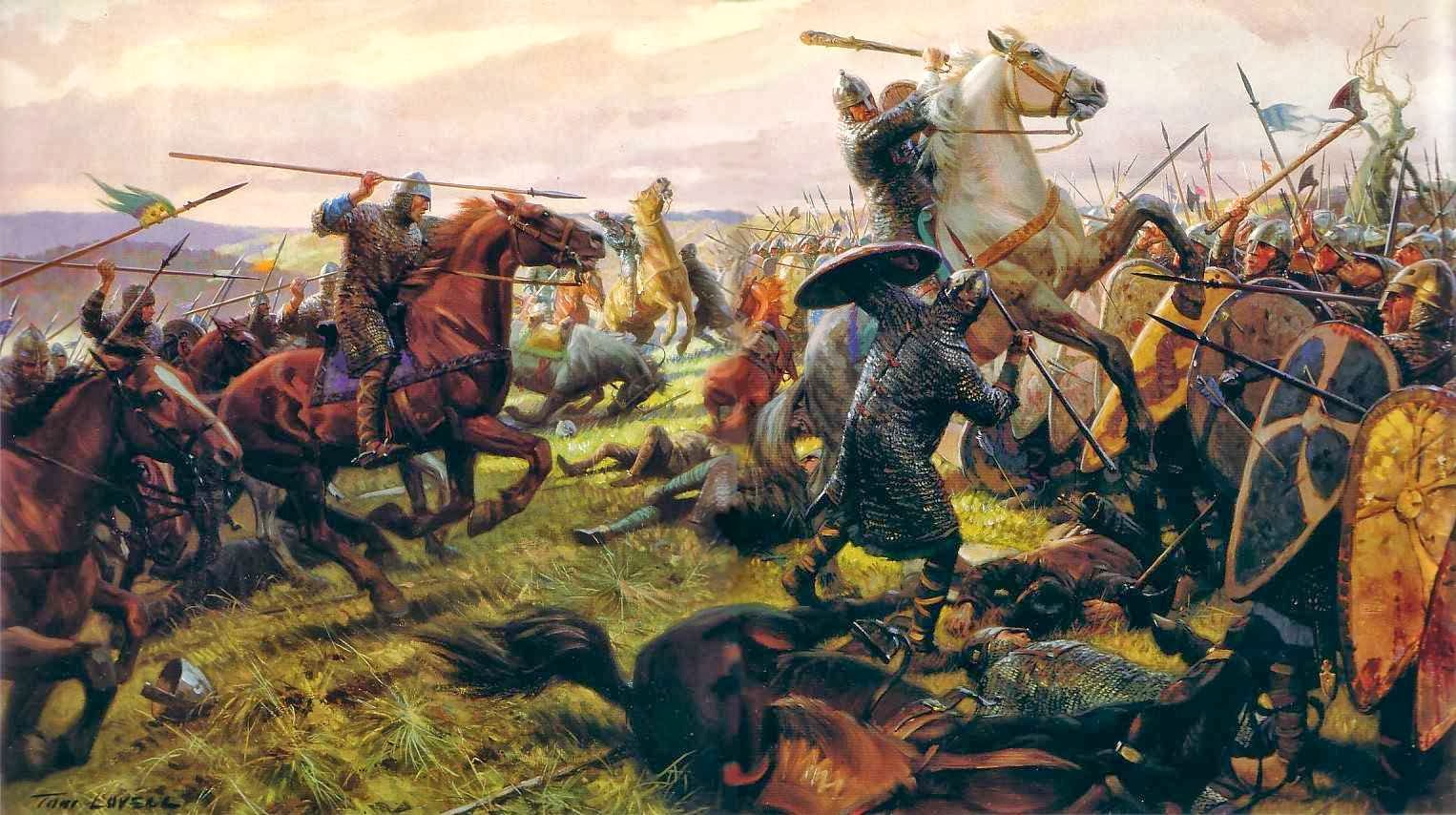The Battle of Hastings, which took place on October 14, 1066, CE, was a pivotal event in the history of England. It marked the beginning of Norman rule in England and had far-reaching consequences for English society and culture. In this article, we’ll talk about the things that happened before the Battle of Hastings, the battle itself, and what it meant for history.
In 1066 CE, King Edward the Confessor was in charge of England. He didn’t have any children, so his job was taken over by his brother-in-law, Harold Godwinson. However, another claimant to the throne emerged: William, Duke of Normandy, who believed that Edward had promised him the throne before his death. William put together an army and invaded England on September 28, 1066, CE. He landed at Pevensey.
On September 25, 1066, CE, Harold had just won the Battle of Stamford Bridge against the Norwegians. He quickly marched south to meet the Norman army, and the two sides met at Senlac Hill near Hastings.
The Battle of Hastings was fought over the course of a single day, from dawn until dusk. The Norman army was made up of around 7,000 men, including knights on horseback, archers, and infantry. The English army, which was mostly made up of infantry and had about 7,500 men, was a bit bigger.
The battle began with a Norman cavalry charge, which was met by a shield wall of English infantry. The Norman cavalry was unable to break through the shield wall, and the English began to gain the upper hand. But the Norman archers were able to hurt the English a lot, especially in the eyes, and the English began to lose their strength.
In the afternoon, the Norman knights launched a second cavalry charge, which was more successful. Harold was killed, possibly by an arrow to the eye, and the English army began to collapse. The Normans pursued them and slaughtered many of them as they fled.
The Battle of Hastings had significant consequences for English society and culture. It marked the beginning of Norman rule in England, which lasted for several centuries. The Normans brought with them a new language, French, which became the language of the ruling class and had a significant impact on the development of English.
The Battle of Hastings also had political and military implications. It made the Norman dynasty stronger and kept England separate from the rest of Scandinavia, which was getting closer together under the rule of the Danish king. The battle also changed the way soldiers fought in Europe, especially when it came to using horses and bows.
In conclusion, the Battle of Hastings was a significant event in English history, with far-reaching consequences for English society and culture. It was the start of Norman rule in England, and it changed politics, the English language, and how soldiers fought. Its legacy continues to be felt today, over 900 years later.
Here are some sources used in this article about the Battle of Hastings:
- Keen, M. (1999). The Norman Conquest. Pearson Education Limited.
- Wood, M. (2003). In Search of the Dark Ages. BBC Books.
- Carpenter, D. A. (1997). The Battle of Hastings: The Fall of Anglo-Saxon England. Sutton Publishing.
- Gravett, C. (2000). Hastings 1066: The Fall of Saxon England. Osprey Publishing.
- Jones, D. (2012). 1066: The Battle for Middle Earth. BBC Books.


